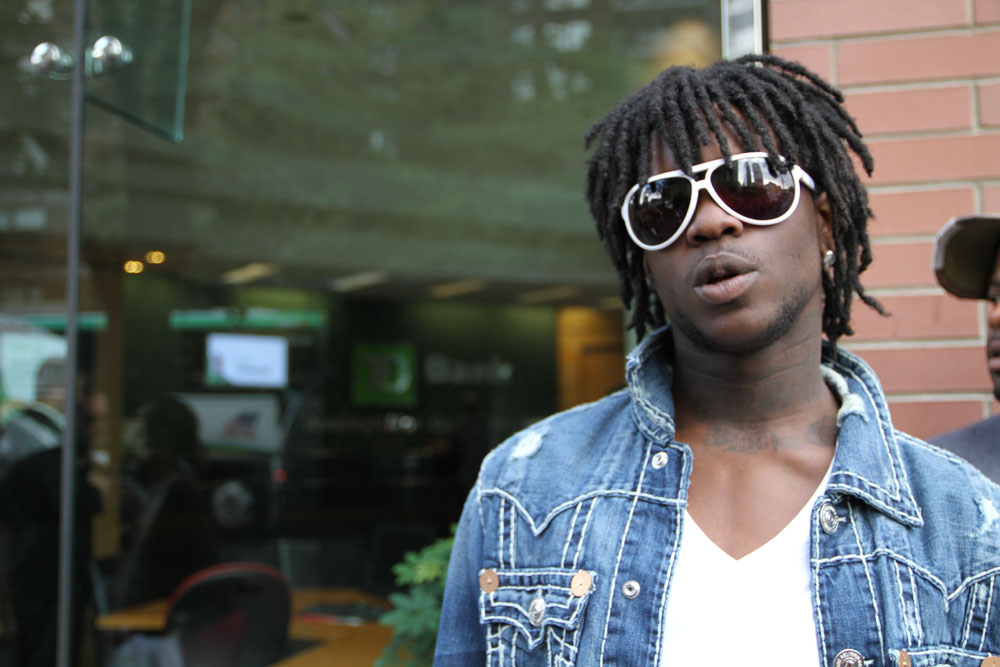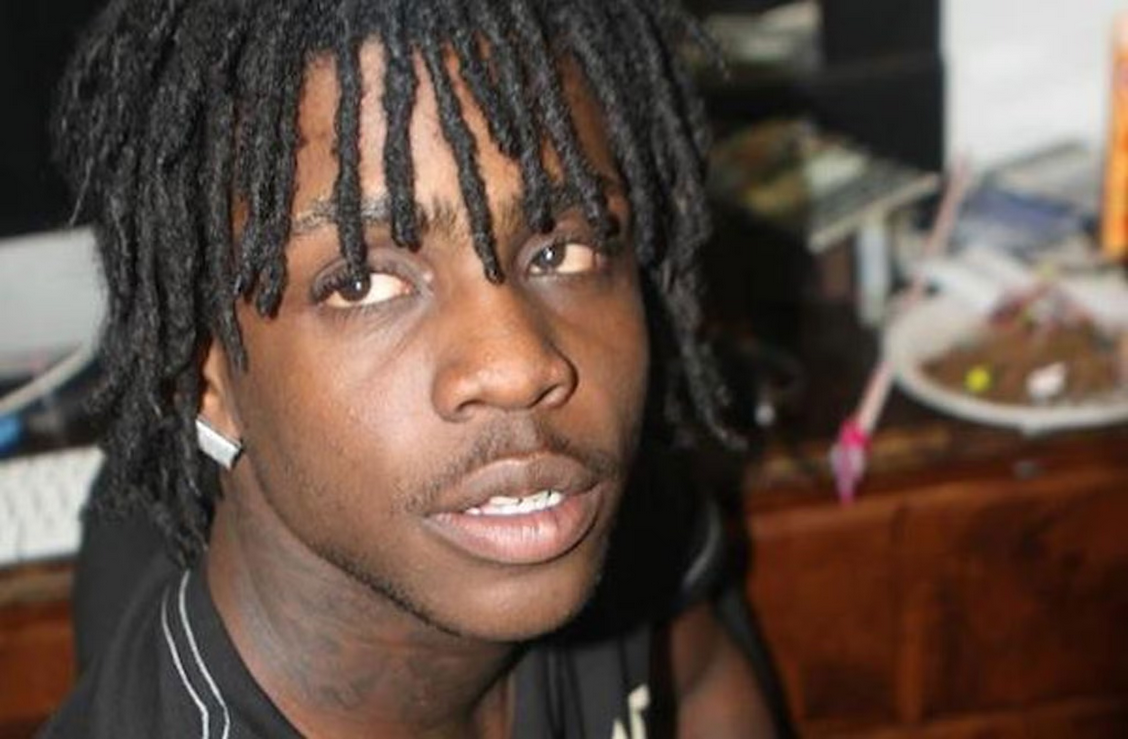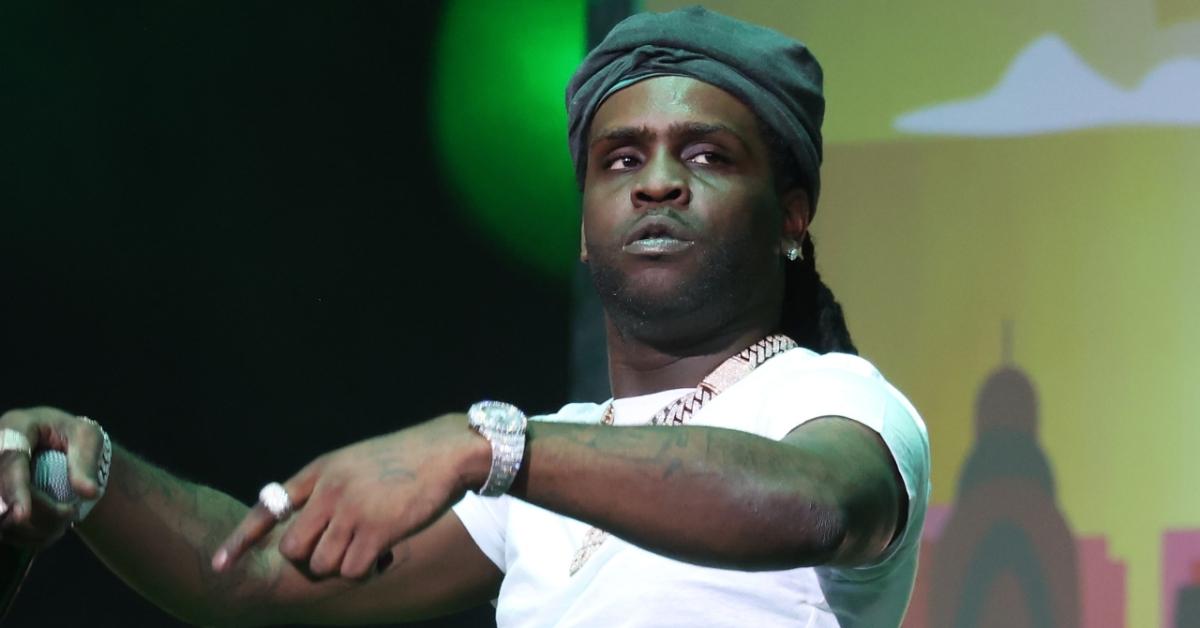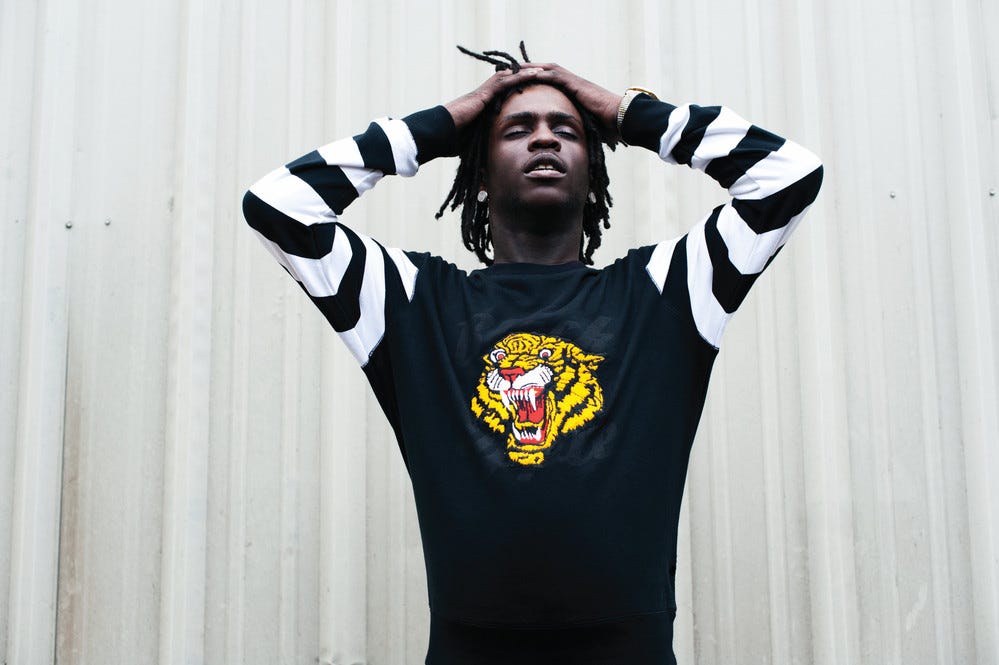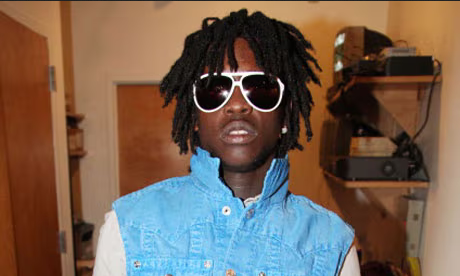SUMMARY:
- Keith Farrelle Cozart, known as Chief Keef, was born on August 15, 1995, in Chicago, Illinois, making him 28 years old as of 2024. His distinctive dreads have become a significant part of his identity in the hip-hop scene.
- Chief Keef’s dreads are not just a style choice but a symbol of his journey and growth within the music industry, reflecting his roots and influences from Chicago’s rap culture.
- Over the years, Keef’s dreads have evolved, mirroring changes in his personal life, career, and artistic direction. This evolution is closely followed by fans and has sparked discussions on social media platforms about the significance of hairstyle in self-expression and identity in the hip-hop community.
Keith Farrelle Cozart, known by his stage name Chief Keef, has been a defining figure in the music world since he burst onto the scene in the early 2010s.
At the age of 28, this Chicago-native rapper, singer, songwriter, and record producer has both fascinated and polarized audiences with his raw lyrical content and unique sound that played a pivotal role in popularizing the drill music genre. Chief Keef’s journey from the streets of Chicago to becoming a music industry icon is marked by his undeniable talent and a series of legal challenges.
One of the most memorable moments in his career came when his mugshot was released following an arrest in December 2011, at the tender age of 16. This image became iconic, not just for its representation of a young talent facing adversity, but also for encapsulating the tumultuous relationship between fame, youth, and legality in America’s urban music scene.
The mugshot, and the circumstances surrounding it, highlighted the complexities of Chief Keef’s early career and the societal issues faced by many young artists in similar positions.
Who Is Chief Keef?
Keith Farrelle Cozart, known professionally as Chief Keef, is an influential American rapper, singer, songwriter, and record producer. Born on August 15, 1995, in Chicago, Illinois, he has become a pivotal figure in the music industry, especially within the hip-hop genre and its drill subgenre.
Chief Keef’s journey from the streets of Chicago to international fame is marked by both his groundbreaking musical contributions and his complex personal life.
Timeline of Chief Keef’s Life So Far
- 1995: Born Keith Farrelle Cozart in Chicago, Illinois, on August 15.
- Early 2010s: Begins to gain local attention with homemade YouTube videos and high school word of mouth.
- 2012: Achieves mainstream success with the hit single “I Don’t Like,” which leads to a remix featuring Kanye West.
- 2012: Releases debut album “Finally Rich,” featuring hits like “Love Sosa” and “Hate Bein’ Sober.”
- 2013-Present: Continues to release music, including mixtapes and albums, influencing the sound and direction of contemporary rap and drill music.
- 2017: Arrested in Miami Beach, highlighting ongoing legal challenges.
- 2024: As of today, boasts 10 million followers on Instagram, indicating his lasting impact and popularity.
Chief Keef’s career has been characterized by his raw portrayal of life in Chicago’s South Side, his pioneering role in the drill music scene, and his adept use of social media to engage with fans and distribute his music.
Despite facing legal issues and controversies, Chief Keef remains a significant figure in the music industry, influencing countless artists and maintaining a strong fan base around the world.
The Origin Story of Chief Keef’s Dreads
Chief Keef’s distinctive dreadlocks are not just a style choice but also a significant aspect of his identity, deeply rooted in his journey from the streets of Chicago to the heights of the music industry.
The origin story of his dreads intertwines with his rise as a pioneer in the drill music scene, symbolizing his authenticity and connection to his roots.
Growing up in the South Side of Chicago, Chief Keef was immersed in a culture where hair often serves as a powerful expression of individuality and heritage. His decision to grow dreadlocks was influenced by local trends and personal preference, reflecting a broader tradition within the African American community that values dreads as a sign of strength, wisdom, and natural beauty.
As Chief Keef’s career took off, his dreads became an integral part of his public image, setting him apart in the highly visual world of hip-hop. Fans and fellow artists alike came to recognize him not just for his groundbreaking music but also for his distinctive look, which has inspired countless imitations and adaptations.
Moreover, Chief Keef’s dreads have evolved over the years, mirroring changes in his personal life and career.
From variations in length and style to the inclusion of colorful beads and ties, these modifications serve as a visual diary of his journey, marking milestones and transitions both within and outside the music industry.
The Evolution of Chief Keef’s Dreadlocks
Chief Keef, a figure synonymous with the drill music genre, has not only made waves through his music but also through his distinctive personal style, particularly his evolving dreadlocks.
Over the years, Keef’s dreads have undergone significant transformations, each reflecting a new phase in his career and personal expression. From their initial formation to the present day, his hairstyle has become a subject of interest and inspiration for fans worldwide.
The Beginnings: Twisted Roots
Chief Keef’s journey with dreadlocks began with the traditional twisting method, a common technique used to form dreads in afro-textured hair.
This method involves sectioning the hair and then twisting it to encourage the natural locking process. In the early stages of his career, this simple yet effective technique laid the foundation for what would become one of his most recognizable features.
The Rise: Signature Styles
As Chief Keef’s career progressed, so did the evolution of his dreadlocks.
His hair grew longer, and he started experimenting with different styles that would become signature looks. Among these was the “hanging dreads” style, where his locks would freely hang, often partially covering his face, a look that became emblematic of his image during the height of his popularity.
This period marked a shift towards a more distinct personal style, aligning with his growing influence in the music scene.
The Experimentation: Colorful Expressions
In a bold move mirroring his artistic experimentation, Chief Keef began incorporating colors into his dreads. This phase saw him sporting dreads dyed in hues of red, blue, and even multi-colored patterns, showcasing his flair for self-expression and willingness to stand out.
This colorful period in Keef’s dreadlock evolution highlighted his role as a trendsetter, not just in music but in fashion and personal style within the hip-hop community.
The Maturity: Refined Length
More recently, Chief Keef’s dreadlocks have taken on a more mature and refined appearance. Maintaining their length, his dreads now exhibit a sense of sophistication, mirroring his evolution as an artist and individual.
This current style reflects his continued influence in the industry, balancing his iconic look with a more polished aesthetic.
Throughout these transformations, Chief Keef’s dreadlocks have remained a constant symbol of his identity, reflecting his journey from a young rapper from Chicago to an influential figure in hip-hop. Each change in style tells a story of personal and artistic growth, showcasing his adaptability and resilience in the face of challenges and changes. Through his dreads, Chief Keef communicates a narrative of persistence, creativity, and authenticity, making them an integral part of his legacy in the music world.
Symbolism and Significance of Dreads in Rap
Dreadlocks, often simply called dreads, hold profound symbolism and significance within the rap community, embodying more than just a hairstyle choice.
In the context of rap and hip-hop culture, dreads are not only a form of self-expression but also a powerful symbol of identity, resistance, and connection to heritage.
The roots of dreadlocks can be traced back to various cultures and religions worldwide, including significant ties to Rastafarianism, which views the hairstyle as a symbol of one’s covenant with God and a rejection of conventional beauty standards. When adopted by artists in the rap community, dreads often reflect a deeper connection to African ancestry and cultural heritage, serving as a reminder of the struggles and resilience of African peoples.
In the realm of rap, dreads also signify rebellion against societal norms and the mainstream music industry. They represent an assertion of individuality and authenticity, marking the wearer as someone who stands apart from the crowd and values personal truth over conformity.
This aspect of dreads aligns with the foundational elements of hip-hop culture, which is built on the pillars of originality and self-expression.
Moreover, dreads in the rap world often symbolize a rite of passage or a marker of success and growth. For many artists, growing their hair into dreadlocks coincides with pivotal moments in their careers or personal lives, signifying transformation and maturity. The evolution of an artist’s dreads can mirror their artistic development, with changes in style, length, and color reflecting shifts in their music, outlook, and public persona.
Copying Chief Keef’s Style: Do’s and Don’ts
Chief Keef, a pioneer of the drill music scene, is not only known for his influential sounds but also for his distinctive style. Emulating his look, especially his iconic dreadlocks, can be a form of homage or personal expression.
However, it’s important to approach this with respect and understanding. Here are some do’s and don’ts for those looking to draw inspiration from Chief Keef’s style.
Do’s
- Do Research the Meaning: Before adopting any element of Chief Keef’s style, especially his dreadlocks, understand the cultural and personal significance they may hold. This helps ensure your appreciation is respectful and informed.
- Do Embrace Individuality: Chief Keef’s style is as much about his individuality as it is about the fashion or hairstyles he chooses. When drawing inspiration from his look, make it your own by adding personal touches that reflect your identity.
- Do Respect the Process: If you’re specifically interested in achieving a hairstyle similar to Chief Keef’s dreadlocks, recognize that it’s a journey. Proper care and patience are essential in nurturing authentic dreadlocks.
- Do Consider the Occasion: While Chief Keef’s style is iconic, it’s important to adapt it appropriately to different settings and occasions, ensuring it aligns with the expected norms and respects the environment you’re in.
Don’ts
- Don’t Ignore Cultural Sensitivity: Dreads carry deep cultural significance in many communities. Wearing them without acknowledging or respecting their origins can be insensitive. Always approach cultural elements with the respect they deserve.
- Don’t Prioritize Style Over Substance: Chief Keef made a name for himself through his music and what he represents in the hip-hop community. Emulating his style should not overshadow the importance of understanding and appreciating his artistic contributions.
- Don’t Neglect Hair Health: If you decide to adopt a dreadlock hairstyle, don’t neglect the health of your hair and scalp. Proper maintenance is crucial to preventing damage and ensuring your locks remain healthy.
- Don’t Miss the Evolution: Chief Keef’s style has evolved over the years, reflecting his growth as an individual and artist. Don’t fixate on one phase of his aesthetic; recognize that change and growth are parts of personal expression.
Emulating Chief Keef’s style, particularly his dreadlocks, is a way to pay tribute to his influence in music and fashion. However, it’s vital to approach this with mindfulness, respect for cultural significance, and an emphasis on personal authenticity.
By following these do’s and don’ts, fans can honor Chief Keef’s legacy while fostering their unique expression.
Conclusion
Chief Keef’s mugshot is more than just an image; it’s a cultural artifact that speaks volumes about the intersection of youth, legality, and fame in modern America. At 28 years old, Chief Keef has grown from the teenager in that widely circulated mugshot to a seasoned artist who has left an indelible mark on the music industry. His story is one of resilience, creativity, and the ability to influence a generation of music lovers and creators.
Despite the controversies and legal issues that have shadowed his career, Chief Keef’s impact on the drill music genre and hip-hop culture is undeniable. His mugshot remains a poignant reminder of his journey from a troubled youth to a music icon, illustrating the power of redemption and the capacity for change.
As Chief Keef continues to evolve as an artist, his legacy, encapsulated by his music and the iconic mugshot, will undoubtedly continue to influence and inspire!

